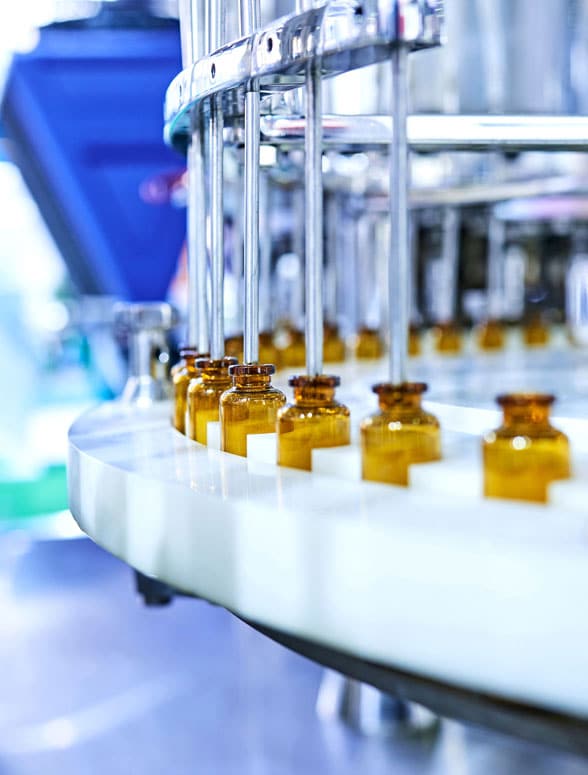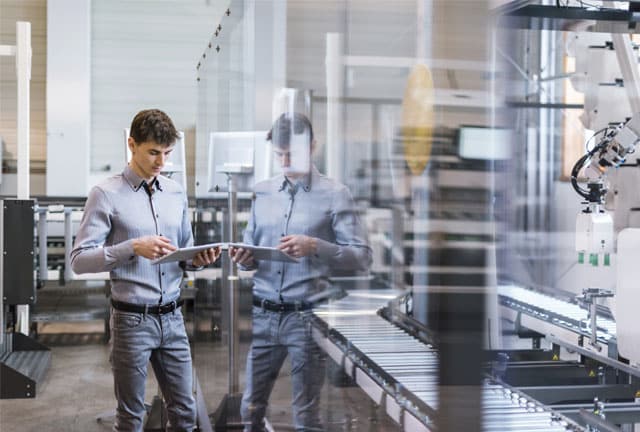Industry & Manufacturing

Industry isn’t what it used to be and that’s just as well. The rigid, predictable, linear supply chains of yesteryear are being replaced by interconnected ecosystems where every link counts, and where every decision can turn a constraint into an opportunity. Amid ever more demanding expectations for customized production, sustainability, relentless innovation, and responsiveness industry is reinventing itself, embracing a new model built on agility, technology, and vision.
It’s no longer just about being competitive. Rather, it’s about staying relevant. Every transformation from human-machine collaboration and smart supply chains, to reducing emissions and adopting new business models heralds the dawn of new era in which flexibility and strategic vision are becoming two sides of the same coin.
That’s where we come in. Drawing on our combined expertise in software publishing, technology integration, and strategic support, we deliver solutions that align perfectly with your priorities. In every relationship, we listen sincerely, build trust, and communicate openly, paying close attention to your realities on the ground. And we move forward with a single goal in mind: to enact tangible, lasting, purposeful change.
Constant innovation: From trends to new strategic directions
Human-Machine collaboration and the transition to industry 5.0
The notion of people collaborating with machines is a long-held ambition. But it’s now emerging as a response to the critical challenges facing industry—not least the shortage of labor. At a time when human talent is becoming harder to come by, collaborative robots and algorithms are stepping into the void, relieving operators of demanding and repetitive tasks. On production lines, these cobots are reducing physical strain while setting new standards for precision. In offices, meanwhile, robotic process automation (RPA) and artificial intelligence (AI) are taking over time-consuming processes, leaving staff free to concentrate on innovation and strategic decision-making. These technologies aren’t replacing humans. They’re forming a complementary relationship, recognizing the value that people bring to strategic and creative tasks.
Practical solutions are coming into play for manufacturers:
- Cobots make workstations safer and compensate for a shortage of labor on shop floors.
- RPA and AI technologies automate some administrative processes, reduce errors, and boost operational performance.
- “Augmented AI” systems help managers plan and optimize complex processes.
Smart supply chain: Reinventing industrial flows
Today’s customers expect highly personalized products, made locally and with a reduced environmental footprint. As such, the demands on manufacturers have never been higher. The supply chain, long conceived of as a linear structure, is transforming into a fully-fledged network that can absorb tensions and respond with agility to market fluctuations. As product life cycles shorten and supply chains face mounting pressure, manufacturers have no option but to pursue this transformation if they are to be capable of adapting without compromising on performance and sustainability. Such an approach also helps to strike the right balance between local and global production, allowing companies to meet varying market needs while retaining their competitive edge.
New solutions are emerging:
- Warehouse management systems (WMS) with integrated IoT and AI technologies to coordinate flows in real time and adjust logistics operations to unpredictable market developments.
- 3D printing and microfactories that bring production closer to consumers for shorter lead times, more exhaustive customization, and less dependence on global supply chains.
- Increased traceability to reduce losses, optimize resource use, and embed sustainable practices all along the supply chain.
Sustainability and environmental responsibility: Turning the page on resource-intensive practices
Manufacturers must learn how to produce and innovate without harming the planet and depleting natural resources. Reducing CO2 emissions and waste has become a top priority, prompting manufacturers to adopt eco-design and other environmentally friendly practices, to better manage their flows, and to recycle and recover resources every step of the way. This change, driven by increasingly demanding customers and strict regulations, implies a complete rethink of production models and supply chains. With products that are built to last, flows optimized in real time, and reuse as common practice, every process is an opportunity to transform a resource-consuming model into a sustainable, environmentally friendly ecosystem. And the benefits of this approach extend beyond the environment because manufacturers also stand to gain in terms of both costs and competitiveness.
Solutions to accelerate this transition include:
- Connected machines to detect and remedy inefficiencies.
- Advanced analytics tools to optimize energy consumption and reduce carbon emissions.
- Circular models that incorporate recycling, reuse, and sustainable design.
New business models: Winning new business through transformation
Ownership or use, product or service: the lines are shifting and industry is changing as manufacturers explore new models in a quest to connect more closely with their customers, gather strategic data, and generate steady, additional revenue streams. Servitization is a game-changer, with manufacturers shifting away from selling a single product and harnessing IoT and AI technologies to market add-on services such as predictive maintenance and remote management. At the same time, the D2C and D2D models are reshaping conventional distribution channels, establishing a direct relationship with customers, with a strong focus on personalization.
Emerging solutions include:
- Recurring services that turn individual products into fully fledged solutions and build long-term retention.
- IoT and IA technologies that enable smart services and help manufacturers anticipate changing needs.
- D2C and D2D models that put control of the distribution process back in manufacturers’ hands and strengthen their relationships with customers.
- A hybrid approach that combines traditional sales and “as-a-service” solutions to cater to varied needs and requirements.
Resilience and cybersecurity: Protecting the industry against uncertainty
Amid mounting cyberattacks, geopolitical tensions, and growing dependence on foreign suppliers, every new crisis exposes the fragility of today’s interconnected industry model. For manufacturers, the key to a securing long-term future lies in controlling sensitive data and investing in robust critical infrastructure. By relocating strategic supply chains, adopting sovereign cloud technologies, and proactively pursuing automation, they’ll be well-placed to guarantee business continuity and maintain their competitive edge when the unexpected happens. Meanwhile, proactive risk governance strategies help companies get ahead of threats before they materialize.
Some possible solutions:
- Relocating key activities to reduce dependency and secure supply chains.
- Embracing smart automation for lightning-fast response to threats and fluctuations.
- Establishing a cyber culture among all stakeholders.
Data and predictive intelligence: The lifeblood of modern industry
With sensors, flows, and connected systems, data is everywhere in plants and supply chains. But its true power is only unleashed when it’s orchestrated. Turning raw data into operational intelligence allows manufacturers to anticipate needs, optimize resource use, and turn every flow into a strategic advantage. Effectively leveraging data—in a way that maintains its integrity and delivers a positive impact—requires clear governance arrangements and an ethical strategy.
Here are some ways to harness this key resource:
- IoT sensors to capture data in real time and fine-tune decisions.
- AI and machine learning to anticipate demands and address inefficiencies.
- Data governance to guarantee data integrity and guide strategic decision-making.
- Secure data-sharing between industrial partners to build collaborative ecosystems.
Developing technologies is one step. Anchoring them in your reality is our mission
Industry is constantly pushing the boundaries of innovation, production, and transformation. But behind every step forward lie strategic decisions, well-thought-out tools, and hard-working people.
At Hardis Group, we start every project by listening attentively to your priorities. As our collaboration progresses, we build solutions tailored to your realities, working closely with you to achieve future-focused transformation. Whether we’re streamlining your flows with Hardis Supply Chain, connecting your infrastructure with Hardis Tech Services, or transforming your customer relationships with Cloudity, we go the extra mile to make sure every step forward delivers tangible, lasting change. From consulting to design and integration, everything we do is geared toward helping you achieve your goals in a way that aligns with your realities.
